Song Ke
Immunogenicity Prediction with Dual Attention Enables Vaccine Target Selection
Oct 03, 2024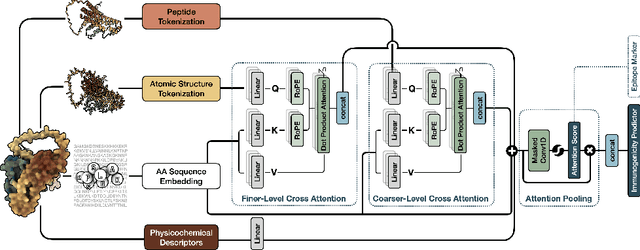
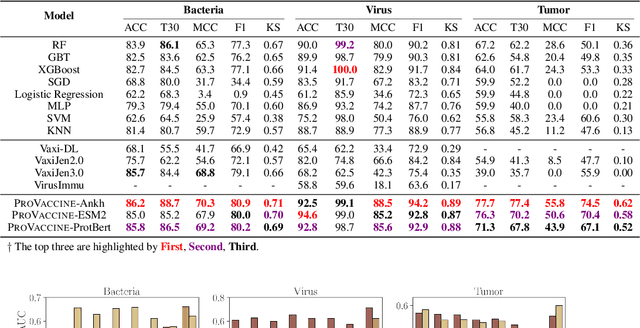


Abstract:Immunogenicity prediction is a central topic in reverse vaccinology for finding candidate vaccines that can trigger protective immune responses. Existing approaches typically rely on highly compressed features and simple model architectures, leading to limited prediction accuracy and poor generalizability. To address these challenges, we introduce ProVaccine, a novel deep learning solution with a dual attention mechanism that integrates pre-trained latent vector representations of protein sequences and structures. We also compile the most comprehensive immunogenicity dataset to date, encompassing over 9,500 antigen sequences, structures, and immunogenicity labels from bacteria, viruses, and tumors. Extensive experiments demonstrate that ProVaccine outperforms existing methods across a wide range of evaluation metrics. Furthermore, we establish a post-hoc validation protocol to assess the practical significance of deep learning models in tackling vaccine design challenges. Our work provides an effective tool for vaccine design and sets valuable benchmarks for future research.
A Ligand-and-structure Dual-driven Deep Learning Method for the Discovery of Highly Potent GnRH1R Antagonist to treat Uterine Diseases
Jul 23, 2022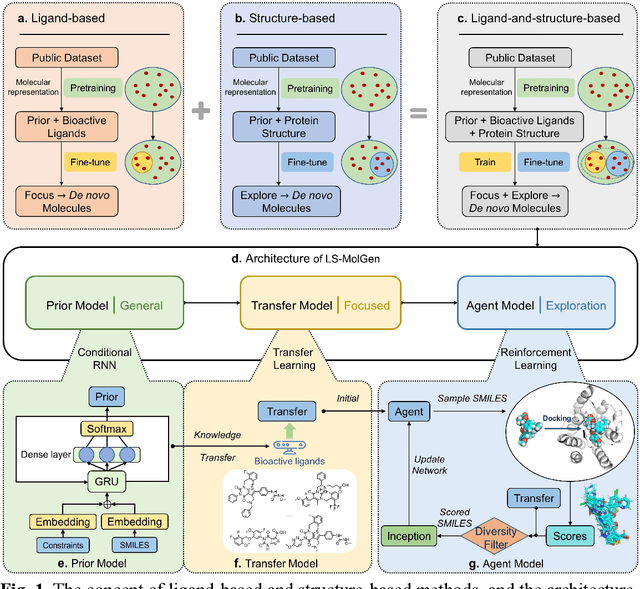
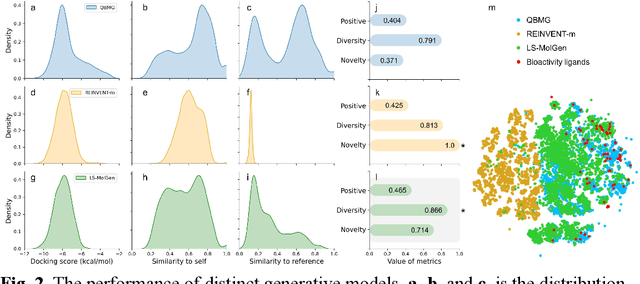

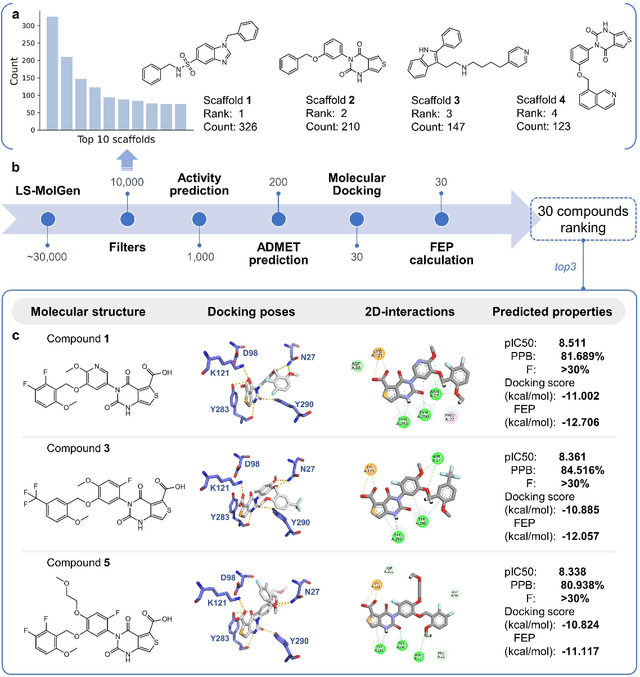
Abstract:Gonadotrophin-releasing hormone receptor (GnRH1R) is a promising therapeutic target for the treatment of uterine diseases. To date, several GnRH1R antagonists are available in clinical investigation without satisfying multiple property constraints. To fill this gap, we aim to develop a deep learning-based framework to facilitate the effective and efficient discovery of a new orally active small-molecule drug targeting GnRH1R with desirable properties. In the present work, a ligand-and-structure combined model, namely LS-MolGen, was firstly proposed for molecular generation by fully utilizing the information on the known active compounds and the structure of the target protein, which was demonstrated by its superior performance than ligand- or structure-based methods separately. Then, a in silico screening including activity prediction, ADMET evaluation, molecular docking and FEP calculation was conducted, where ~30,000 generated novel molecules were narrowed down to 8 for experimental synthesis and validation. In vitro and in vivo experiments showed that three of them exhibited potent inhibition activities (compound 5 IC50 = 0.856 nM, compound 6 IC50 = 0.901 nM, compound 7 IC50 = 2.54 nM) against GnRH1R, and compound 5 performed well in fundamental PK properties, such as half-life, oral bioavailability, and PPB, etc. We believed that the proposed ligand-and-structure combined molecular generative model and the whole computer-aided workflow can potentially be extended to similar tasks for de novo drug design or lead optimization.
 Add to Chrome
Add to Chrome Add to Firefox
Add to Firefox Add to Edge
Add to Edge